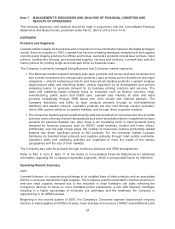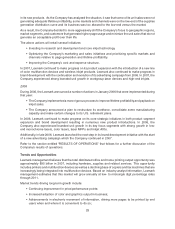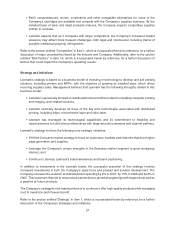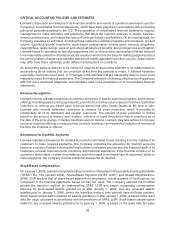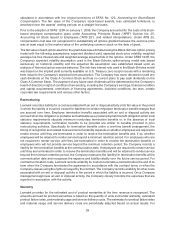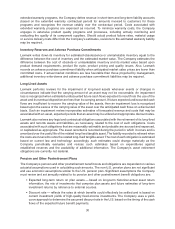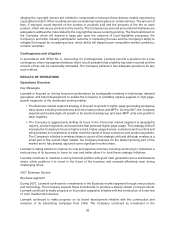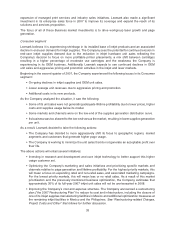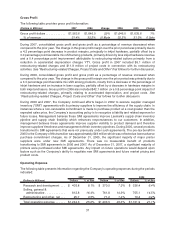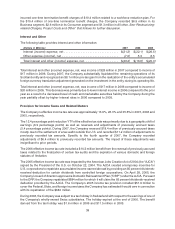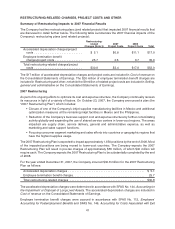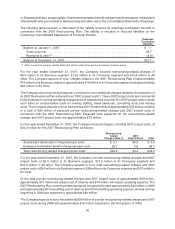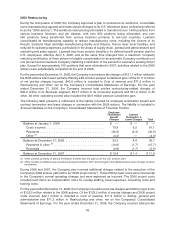Lexmark 2007 Annual Report Download - page 39
Download and view the complete annual report
Please find page 39 of the 2007 Lexmark annual report below. You can navigate through the pages in the report by either clicking on the pages listed below, or by using the keyword search tool below to find specific information within the annual report.expansion of managed print services and industry sales initiatives. Lexmark also made a significant
investment in its enterprise sales force in 2007 to improve its coverage and expand the reach of its
solutions and services proposition.
The focus of all of these Business market investments is to drive workgroup laser growth and page
generation.
Consumer segment
Lexmark believes it is experiencing shrinkage in its installed base of inkjet products and an associated
decline in end-user demand for inkjet supplies. The Company sees the potential for continued erosion in
end-user inkjet supplies demand due to the reduction in inkjet hardware unit sales reflecting the
Company’s decision to focus on more profitable printer placements, a mix shift between cartridges
resulting in a higher percentage of moderate use cartridges and the weakness the Company is
experiencing in its OEM business. Additionally, Lexmark expects to see continued declines in OEM
unit sales and aggressive pricing and promotion activities in the inkjet and laser markets.
Beginning in the second quarter of 2007, the Company experienced the following issues in its Consumer
segment:
• On-going declines in inkjet supplies and OEM unit sales.
• Lower average unit revenues due to aggressive pricing and promotion.
• Additional costs in its new products.
As the Company analyzed the situation, it saw the following:
• Some of its unit sales were not generating adequate lifetime profitability due to lower prices, higher
costs and supplies usage below its model.
• Some markets and channels were on the low-end of the supplies generation distribution curve.
• Its business was too skewed to the low-end versus the market, resulting in lower supplies generation
per unit.
As a result, Lexmark decided to take the following actions:
• The Company has decided to more aggressively shift its focus to geographic regions, market
segments and customers that generate higher page usage.
• The Company is working to minimize the unit sales that do not generate an acceptable profit over
their life.
The above actions will entail several initiatives:
• Investing in research and development and core inkjet technology to better support this higher
usage customer set.
• Optimizing the Company’s marketing and sales initiatives and prioritizing specific markets and
channels relative to page generation and lifetime profitability. For the highest priority markets, this
will mean a focus on expanding retail and non-retail sales, and associated marketing campaigns.
For the lowest priority markets, this will mean less or no retail sales. As a result of this market
prioritization and the previously mentioned business optimization, the Company estimates that
approximately 30% of its full-year 2007 inkjet unit sales will not be anniversaried in 2008.
• Improving the Company’s cost and expense structure. The Company announced a restructuring
plan (“the 2007 Restructuring Plan”) to reduce its cost and infrastructure, including the closure of
one of its inkjet supplies manufacturing facilities in Mexico and additional optimization measures at
the remaining inkjet facilities in Mexico and the Philippines. See “Restructuring-related Charges,
Project Costs and Other” that follows for further discussion.
33



